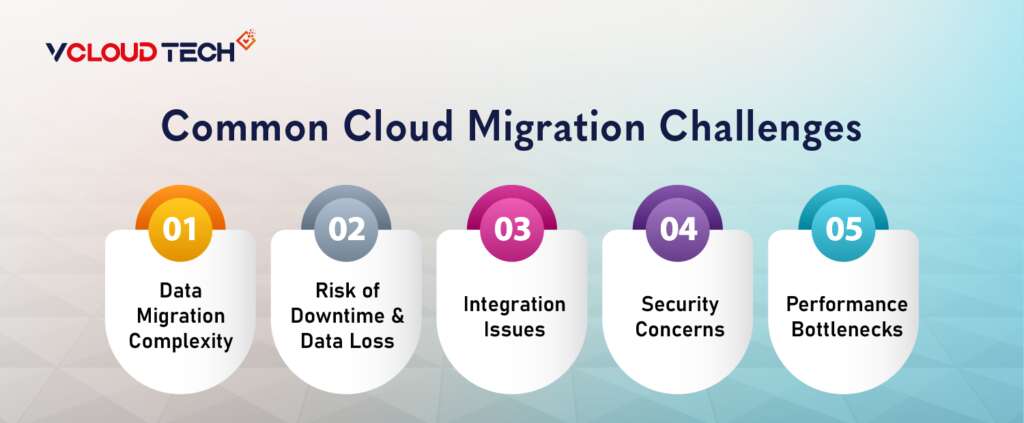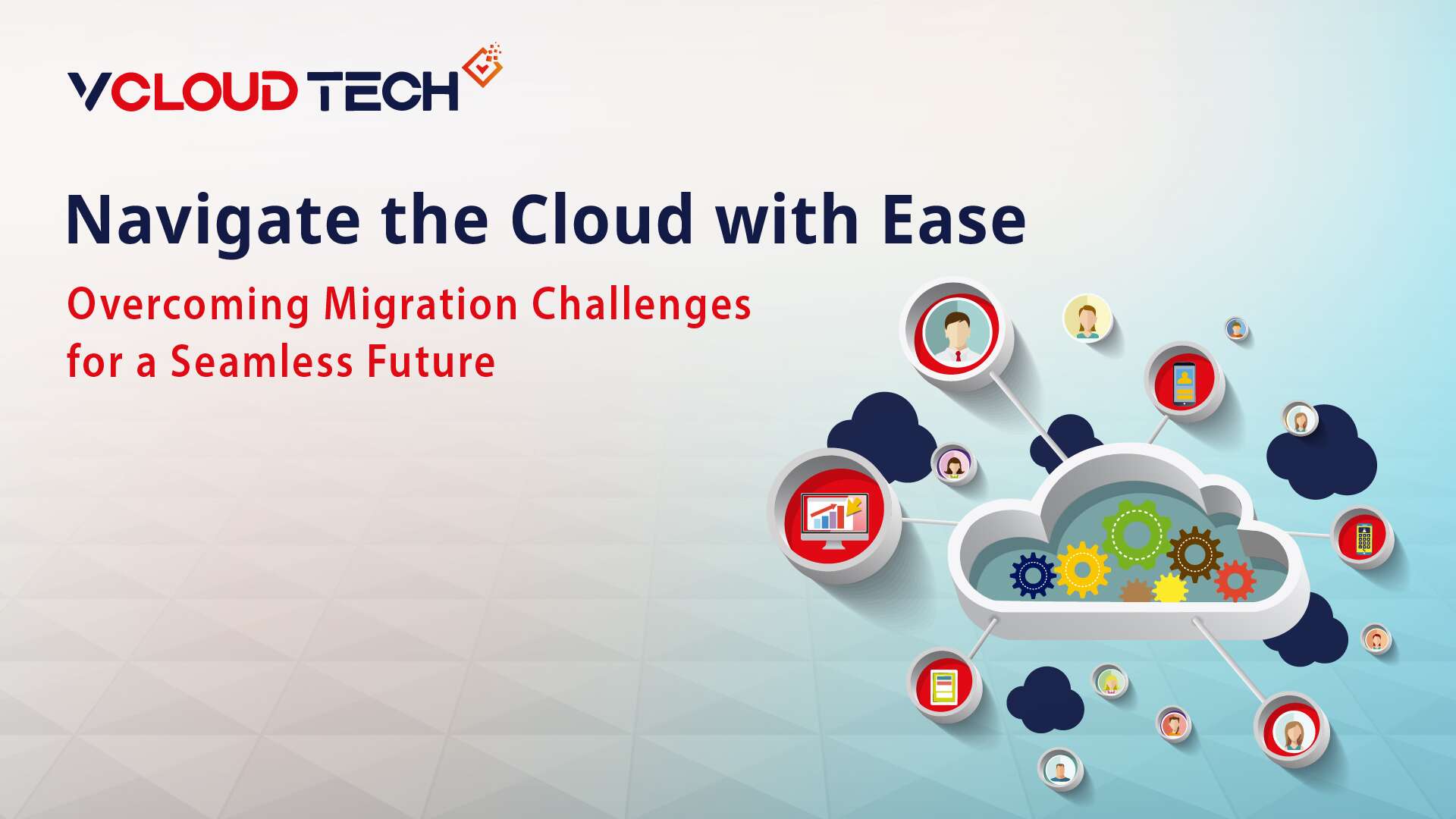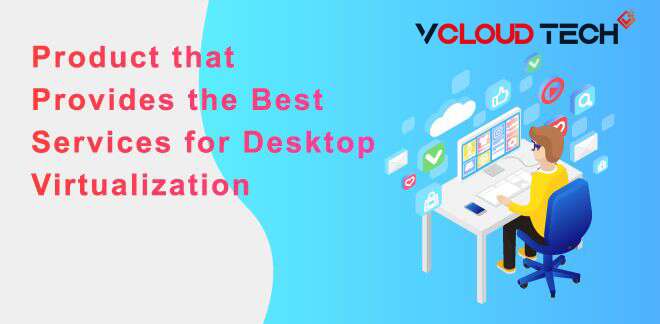The potential of the Cloud to unlock a trillion dollars in business value by 2030 is widely acknowledged. By 2025, it is anticipated that 85 percent of organizations will adopt a cloud-first approach. However, many organizations are still cautious when it comes to taking risks. They are more focused on the possible drawbacks rather than the advantages. These risks encompass cost overruns and time delays. In reality, mistakes in migration lead to the average organization spending 14 percent more on Cloud expenses annually than initially planned. Additionally, 38 percent of organizations have faced migration delays of more than a quarter.
The main takeaway is that Cloud Migration’s pitfalls can be avoided. You only need the right solution and a clear roadmap to guide you. VMware Cloud (VMC) on AWS stands as one solution, tailored to help you overcome obstacles and reap the benefits of the cloud sooner. Teaming up with a seasoned technology partner like Softchoice empowers you to put your Cloud strategy into action confidently.
How is the process of Migrating from On-Premise to the Cloud carried out?
Each business possesses distinct requirements, leading to a somewhat individualized approach to Cloud Migrations. Cloud providers play a role in assisting companies in formulating their migration strategies. Most Cloud Data Migrations encompass these fundamental stages:
Define Objectives:
What improvements in performance does the business anticipate?
When is the scheduled deprecation of legacy infrastructure?
Setting measurable goals aids in assessing the success of the migration.
Develop a Security Strategy:
Cloud Cybersecurity necessitates an approach distinct from on-premise security. In the Cloud, a firewall no longer confines corporate assets, and the concept of a network perimeter becomes nearly obsolete. Employing a Cloud Firewall or a Web Application Firewall might be essential.
Transfer Data:
Choose a Cloud provider and replicate existing databases. This process should continue throughout the migration to ensure the cloud database remains current.
Migrate Business Intelligence:
This might involve reworking or rewriting code (as explained below). It can be undertaken incrementally or all at once.
Transition Production from On-Premise to the Cloud:
The Cloud Environment becomes operational. The migration concludes. Some businesses deactivate their on-premise infrastructure after completing these steps, whereas others might retain legacy systems for backup purposes or as part of a Hybrid Cloud setup.
Common Cloud Migration Challenges
Data Migration Complexity
One of the primary challenges of migrating to the cloud is the complex process of transferring existing data. The data migration process involves moving large volumes of data while ensuring data integrity, consistency, and minimal downtime. This challenge becomes even more significant for businesses dealing with sensitive or critical data.
Risk of Downtime and Data Loss
Cloud migration can lead to potential downtime, which can impact business operations and customer experience. Moreover, if not executed carefully, Data loss can occur during migration, resulting in compromised information and financial loss.

Integration Issues
Businesses often rely on a combination of on-premises systems and cloud services. Integrating these systems seamlessly during Cloud Migration can be challenging, leading to disruptions in workflows and processes.
Security Concerns
Security is a paramount concern when migrating sensitive data to the Cloud. Organizations must ensure that data remains secure during transit and at rest, complying with industry regulations and standards.
Performance Bottlenecks
Poorly planned migrations can lead to performance issues such as slow application response times or network latency, affecting user experience and productivity.
Strategies to Overcome Cloud Migration Challenges
Migrating to the cloud can offer numerous benefits, such as scalability, cost savings, and improved flexibility. However, it’s not without its challenges. Here are some strategies to overcome common Cloud Migration challenges:
Comprehensive Cloud Migration Plan:
A well-defined cloud migration plan is essential to address all aspects of migration, including data transfer, application migration, and network configuration. The project should outline roles, responsibilities, and timelines, ensuring all team members are aligned and aware of their tasks.
Data Migration Strategy:
A robust data migration strategy involves categorizing data based on its importance and sensitivity. Critical data may require a different migration approach than less necessary information. Using efficient Data Migration tools and techniques can streamline the process.
Risk Mitigation:
To mitigate the risk of data loss and Downtime, businesses can adopt strategies such as performing thorough testing in a staging environment before the actual migration, having rollback plans in place, and scheduling migrations during off-peak hours.
Security Measures:
Implementing strong encryption, identity and Access Management Controls, and monitoring tools can enhance data security during migration and throughout its lifecycle in the cloud.
Hybrid Cloud Adoption:
Instead of a full-scale migration, some organizations opt for a Hybrid Cloud approach, gradually moving specific workloads to the cloud while maintaining critical applications on-premises. This strategy minimizes disruption and eases integration challenges.
Engage Cloud Migration Experts:
Collaborating with experienced cloud migration service providers, such as Office 365 Migration Services, can simplify the process. These experts offer specialized knowledge, tools, and best practices to navigate the complexities of migration.
Which Cloud Migration approach should Enterprises embrace?
Gartner, a highly influential IT research company, outlines five choices for organizations shifting to the cloud. These cloud migration strategies are commonly referred to as the “5 R’s”:
Rehost :
Rehosting can be seen as “the same thing, but on cloud servers.” Companies that opt for this strategy will choose an IaaS (Infrastructure-as-a-Service) provider and reconstruct their application architecture on that infrastructure.
Refactor:
Companies that opt to refactor will reuse existing code and frameworks but run their applications on a PaaS (Platform-as-a-Service) provider’s platform instead of on IaaS, as in rehosting.
Revise:
This strategy involves partially rewriting or expanding the codebase and then deploying it through either rehosting or refactoring (as mentioned above).
Rebuild:
“Rebuilding” entails rewriting and re-architecting the application from the ground up on a PaaS provider’s platform. That can be labor-intensive, but it also empowers developers to leverage modern features from PaaS vendors.
Replace:
Businesses can also discard their old applications and transition to third-party vendors’ pre-built SaaS (software-as-a-service) applications.
What Cloud Deployment style should Companies choose?
Apart from the strategy for migrating to the cloud, businesses must also determine the specific configuration of their cloud deployment once the migration is finalized.
A Hybrid Cloud involves:
- The combination of two or more types of environments.
- Incorporating public clouds.
- Private clouds.
- On-premise legacy data centers.
To ensure the effectiveness of a hybrid cloud deployment, seamless integration is essential across all deployed clouds and data centers – similar to how team members require strong communication when located in different offices.
In a multi-cloud deployment, multiple public clouds are combined. (Multiple customers share public clouds.) A multi-cloud setup can serve various purposes, such as redundancy/backup, cost savings, or utilizing distinct features from different cloud providers.
While deploying a single cloud from a sole vendor may only sometimes be feasible for a business, it remains a viable option. Cloud providers offer both public and private clouds – the distinction lies in that private clouds are exclusive to a single company and not shared with others.
Conclusion
While cloud migration challenges are inevitable, they are not insurmountable. With a carefully crafted Cloud Migration Strategy, organizations can navigate the intricacies of data migration, mitigate risks, and ensure a seamless transition to the cloud. By addressing data migration complexities, managing risks, focusing on security, and enlisting the expertise of professionals, businesses can harness the power of cloud services to drive innovation, efficiency, and growth in the digital era.
Reach out to us and book a Free Consultation with vCloud Tech or chat with one of our representatives. Connect with us on Twitter, Facebook, Instagram, and LinkedIn for more information.









